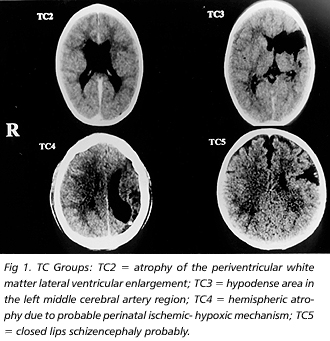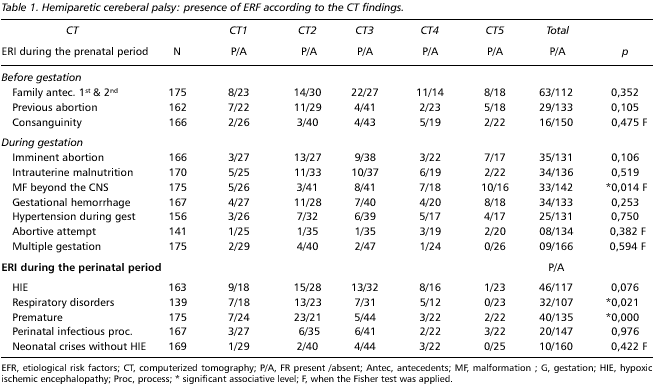The purpose of this paper, which was conducted on 175 children with hemiparetic cerebral palsy (H-CP), was to verify the etiological risk period for this disease. Etiological risk factors (ERF) were detected through anamnesis: 23% in the prenatal period, 18% in the perinatal period and 59% of the patients the period was undefined (ERF in the prenatal and perinatal period was 41% and no ERF was 18% of the cases. The computerized tomographic scan (CT) and MRI were performed on all the patients, who were then classified according to their etiopathogenic data: CT1= normal (18%); CT 2= unilateral ventricular enlargement (25%); CT 3= cortical/ subcortical cavities (28%); CT4= hemispheric atrophy and other findings (14%); CT 5= malformations (15%). CT 5 was associated with physical malformations beyond the central nervous system and with prenatal ERF's , while CT 2 was associated with the perinatal ERF's, mainly in premature births. Magnetic resonance imaging was performed on 57 patients and demonstrated a good degree of concordance with the CT. Etiology remained undefined in only 37% of the cases after neuroimaging was related to ERF. A high perinatal RF frequency (59%) was observed and emphasized the need for special care during this period.
cerebral palsy; hemiparetic cerebral palsy; etiology; etiological risk factors; computerized tomography; magnetic resonance imaging; children






